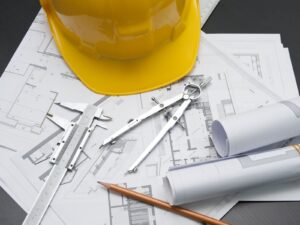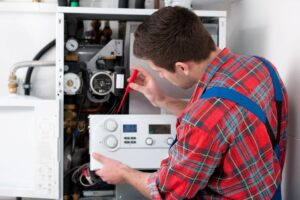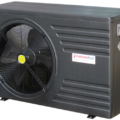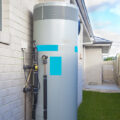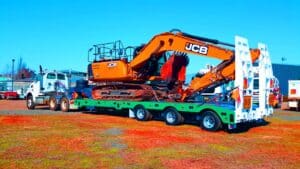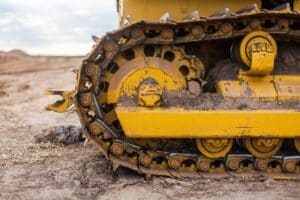For businesses in Canberra and across Australia, maintaining a consistent hot water supply is crucial for daily operations. Whether managing restaurants, medical facilities, office complexes, or residential developments, decision-makers regularly face the challenge of determining when its time to repair existing systems versus investing in complete replacements.
Understanding the key factors that influence this decision can help business operators make more informed choices that optimise both their immediate costs and their long-term operational efficiency.
Identifying System Problems Early
Commercial hot water systems in Canberra will typically experience heavier usage than residential counterparts, leading to accelerated wear patterns. Therefore, property managers should monitor their systems for several warning indicators:
- Temperature fluctuations or reduced water pressure throughout the building
- Unexpected spikes in utility expenses
- Physical deterioration, including leaks, oxidation, or component corrosion
- Unusual operational sounds or vibrations
- Frequent service calls affecting business continuity
Proactive maintenance, which involves early intervention when these symptoms appear, often prevents more extensive damage and costly emergency situations.
Scenarios Where Repairs Prove Most Effective: A Reassuring Solution.
Repair solutions typically offer the best value when systems are relatively recent installations, have received proper maintenance, and experience isolated component failures rather than systemic issues.
Component Replacement Solutions: Temperature control problems frequently stem from worn thermostatic controls or heating elements. These replacements are generally straightforward procedures that restore normal functionality without major system disruption.
Plumbing Connection Issues: Faulty pressure relief mechanisms or deteriorated pipe connections can actually waste significant amounts of water while potentially causing property damage. These localised problems usually respond well to targeted repairs.
Utility System Maintenance Electrical connection problems, ignition system failures, or gas line issues often affect otherwise functional units. Professional diagnosis can identify whether these problems warrant component repair or a complete system evaluation.
Tank Maintenance Procedures Mineral deposits and debris naturally accumulate in storage vessels over time, reducing their thermal efficiency and creating worsening operational noise. Professional cleaning and flushing procedures can restore performance while extending equipment life.
Repair approaches work best for systems under a decade old, where replacement parts remain available, and existing capacity meets current demand levels. A quick repair turnaround also suits businesses that require minimal operational disruption.
When Replacement Becomes the Better Investment
Despite repair options, certain circumstances can make complete system replacement the more practical long-term strategy. Age, performance degradation, and maintenance frequency will often drive these decisions for commercial properties.
Age-Related Considerations: Systems exceeding 10-15 years typically experience declining efficiency, regardless of the quality of their maintenance. Aging equipment also faces increasing challenges in the availability of replacement parts and develop more frequent breakdown cycles.
Economic Analysis: Repeated service calls within short timeframes indicate underlying system deterioration. When repair expenses approach 50% of replacement costs annually, a new installation often provides better value.
Capacity Limitations: When businesses grow they frequently outpace the existing hot water capacity. Inadequate supply during peak demand periods affects customer satisfaction and employee productivity, justifying system upgrades.
Energy Performance Older installations consume substantially more energy than modern alternatives. Advanced heat pump technology, condensing gas systems, and smart controls can reduce operating costs by 20-40% annually.
Health and Safety Standards. Internal corrosion, contamination risks, and deteriorating safety systems pose liability concerns in commercial environments. Modern installations incorporate enhanced safety features and water quality protection.
System Selection for Commercial Applications
Replacement projects offer opportunities to optimise system design for specific business requirements. Modern commercial installations provide several technology options:
Gas-Fired Systems deliver rapid heat recovery rates suitable for high-volume applications, making them ideal for restaurants, hotels, and fitness facilities requiring consistent peak capacity.
Electric Installations offer lower initial costs and simplified installation requirements, working well for smaller commercial applications with moderate demand patterns.
Instantaneous Systems eliminate storage requirements while providing unlimited capacity, though they require careful sizing to meet simultaneous usage demands.
Heat Pump Technology maximises energy efficiency by extracting ambient heat, offering substantial operating cost reductions for businesses prioritising environmental sustainability and long-term savings.
Decision Framework for Business Operators
The decision between repair and replacement depends on three primary evaluation criteria: equipment age, total cost analysis, and operational efficiency requirements.
For newer systems experiencing isolated problems, repairs typically provide the most economical solution. However, aging equipment with declining reliability often benefits from complete replacement despite higher initial investment.
Financial Analysis: Compare annual repair costs against replacement expenses spread over expected system life. Include energy savings from improved efficiency when evaluating modern alternatives.
Operational Impact: Consider downtime costs, capacity requirements, and reliability needs specific to the business type. Critical applications may justify replacement even when repairs remain technically feasible.
Future Planning is a crucial aspect to consider when evaluating commercial hot water systems. It involves anticipating business growth, changing regulations, and technology improvements that might influence long-term system requirements.
Professional Assessment Benefits
Commercial hot water decisions greatly benefit from expert evaluation rather than guesswork. Qualified technicians can assess system condition, identify root causes of problems, and provide realistic projections for repair longevity versus replacement benefits.
Professional analysis includes load calculations for proper sizing, efficiency comparisons between options, and installation requirements that affect total project costs. This comprehensive approach helps business operators make decisions based on complete information rather than immediate repair costs alone.
Frequently Asked Questions
What determines the lifespan of a commercial hot water system? System longevity often depends on the quality of the installation, the frequency of maintenance, water conditions, and the usage intensity. Well-maintained units typically provide you with 10-15 years of reliable service.
How quickly can commercial systems be repaired? Many common hot water system problems can be resolved within a single business day, though parts availability and system complexity can affect repair timelines.
What factors influence the decision between repair and replacement costs? Age, condition, parts availability, and labour requirements can often determine the repair expenses. Replacement costs will depend on the system size, technology type, and the installation complexity.
Which technologies offer the best commercial performance? Optimal system selection depends on demand patterns, energy costs, and space constraints. High-volume applications often benefit from gas systems, while heat pumps excel in energy-conscious installations.
To Summerise
When it comes to successful commercial hot water management, it requires striking a balance between immediate repair needs and long-term operational requirements. While repairs can provide a more cost-effective solution for newer systems, strategic replacement often delivers much better value for those aging installations.
Business operators should evaluate system age, maintenance history, and performance requirements when making these decisions. Professional assessment helps identify the most appropriate approach for specific circumstances, ensuring a reliable hot water supply while optimising operational costs

